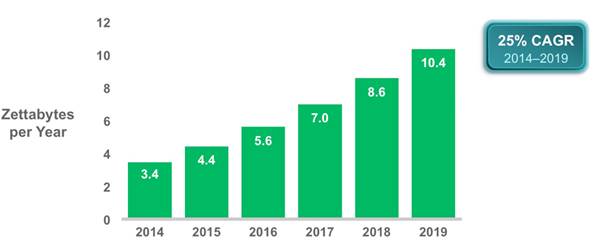
Last week we released the fifth annual Cisco Global Cloud Index (2014-2019), our annual forecast of global data centre and cloud-based traffic growth and trends. Originally intended as a complementary resource to existing Internet Protocol (IP) network traffic studies such as our Visual Networking Index, the Global Cloud Index has become one of the most eye-opening – and important – reports we release.

Why? For the simple fact that cloud, for the most part, is the future of computing for many organizations, and the Cloud Index proves that without any doubt.
Canada is a nation notorious for our slow adoption of cloud computing, and to those of you sitting on the fence wondering whether to finally make the leap … think about this:
According to the Global Cloud Index, North American cloud data centre traffic will represent 81% of total data centre traffic by 2019, compared to 59% in 2014. During that same period, traditional data centre traffic will decrease from 41% to just 19%.
And while not every IT application will be able to adopt a cloud model, that is still a massive swing in how we store, and move, our data. In fact, worldwide we found that global cloud traffic will more than quadruple by the end of 2019, from 2.1 to 8.6 zettabytes (ZB), outpacing the growth of total global data centre traffic by a factor of one.
And the fun doesn’t stop there. By 2019, global data centre IP traffic will reach 863 exabytes per month and 10.4 ZB annually.
To put that in perspective, 10.4 ZB is equivalent to 144 trillion hours of streaming music – enough for every human on Earth to stream music for 26 months in a row.
But even that figure is miniscule compared to the data that will be generated by the Internet of Everything (IoE). Globally, in 2019, the IoE will generate 507.5 ZB of data per year – 49 times higher than the total date centre traffic I mentioned above.
The time to leap into the cloud is now.
To read more about the Cisco Global Cloud Index, read the press release and whitepaper, and leave a comment below.